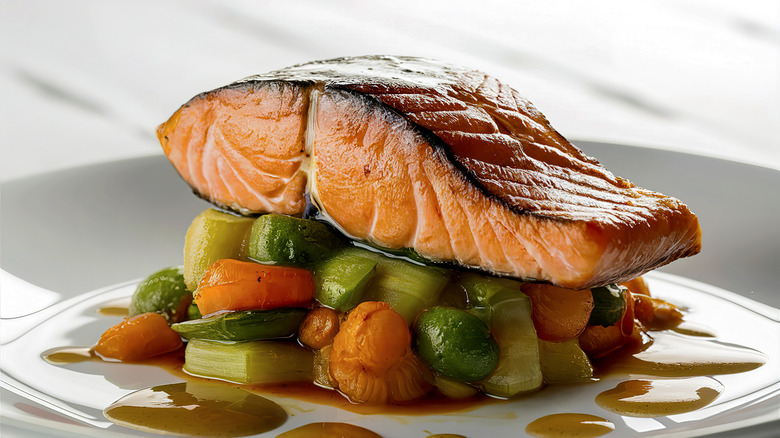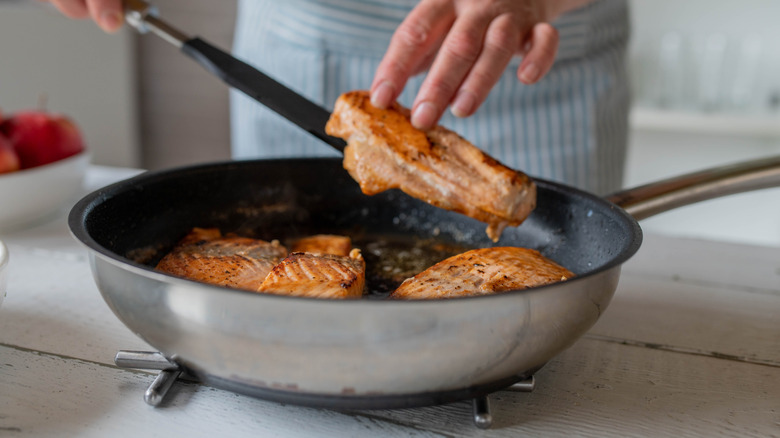Why You Should Be Cooking Salmon Medium-Rare
We may receive a commission on purchases made from links.
Salmon is one of the greatest gifts that bodies of water have ever given us. Not only is it really tasty when cooked properly, but it's chock full of omega-3 fatty acids, which are good for both the brain and the heart, and it has been a crucial part of Indigenous culture in the Pacific Northwest for generations. Now, what is your preferred salmon doneness? If you answered anything except medium-rare, well, we have some news for you.
According to Jason Pfeifer, the culinary director of City Harvest Presents BID 2024: CHTV!, a benefit being held on October 29 to raise money for NYC City Harvest, cooking salmon to medium rare "allows for the best texture, as well as the preservation of its delicate flavors." This means an internal temperature of about 120 to 125 degrees Fahrenheit, which could be a health concern for some if the salmon wasn't flash-frozen before selling (which kills some of the nasty parasites that could be lurking in the flesh). However, most fish is flash-frozen before coming to market, so you should be relatively safe cooking it to 125 degrees if you aren't in a high-risk group (like children, elderly people, or people who are immunocompromised).
A few methods for cooking your salmon to a perfect medium-rare
There are a few ways to achieve that ideal medium-rare cook on your salmon so that you can enjoy it moist and flaky, with a buttery mouthfeel and crisp skin — oh, and these techniques do not include rinsing salmon before cooking. One involves searing the salmon skin-side down on medium-high heat, then flipping it and searing it on the other side for a bit longer. Or, you could take the two-way approach, where you sear both sides on medium-high for a shorter period of time, then finish it off in your pre-heated oven.
It's important to note that however you cook your salmon, once you take it off the pan or tray it will continue to cook, even on the inside, thanks to residual heat. For that reason, you'll want its initial temperature when it's done cooking to be about 115 to 120 degrees Fahrenheit (which you can measure with an instant-read meat thermometer, like this one from Alpha Grillers).
Let the salmon rest for a few minutes and then take the temperature again — it should come to a perfect 120 to 125 degrees. If you do happen to overcook your salmon (happens to the best of us), Pfeifer recommends sauces to help remedy the situation, but admonishes home cooks to simply be careful: "Salmon dries out quite easily."

